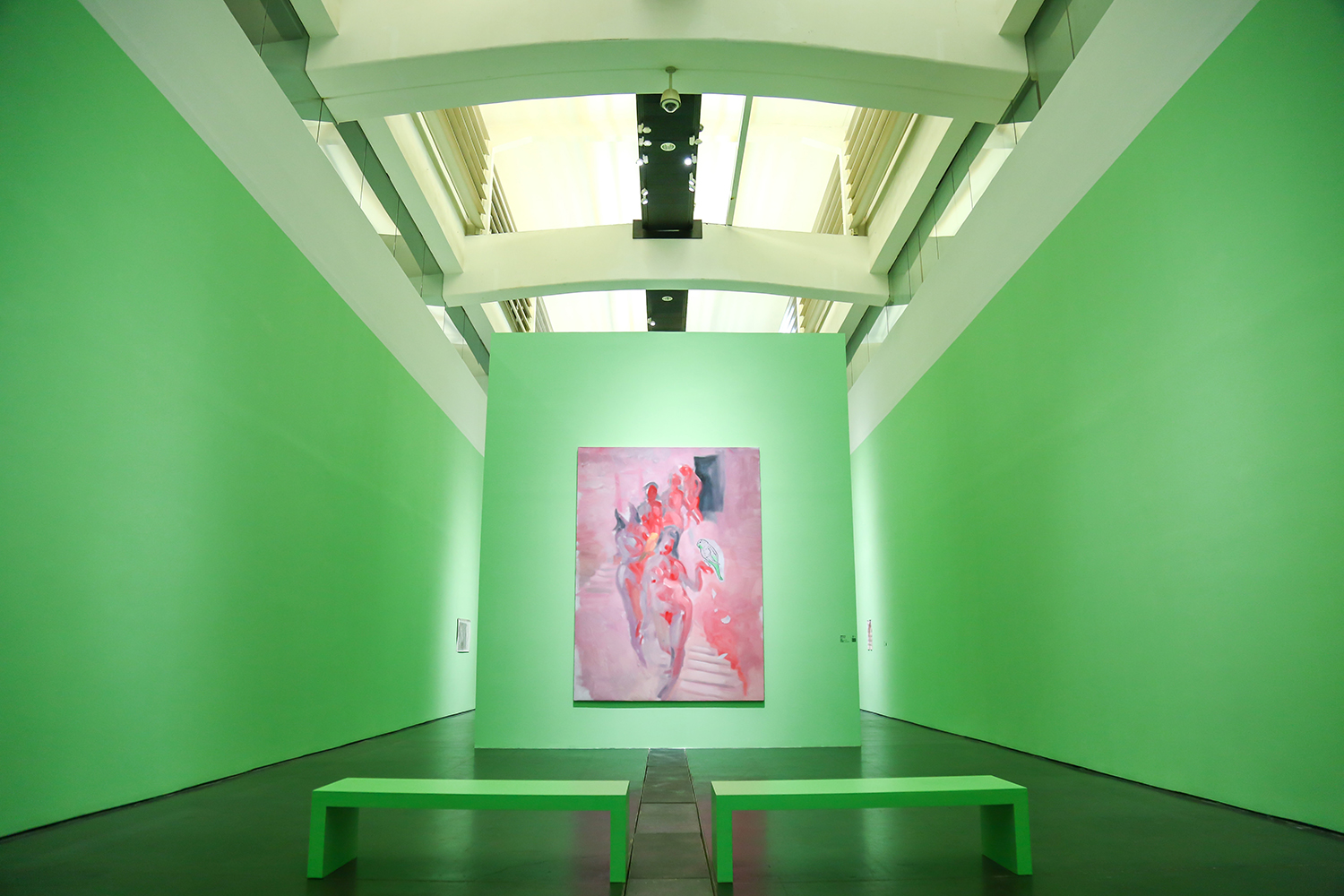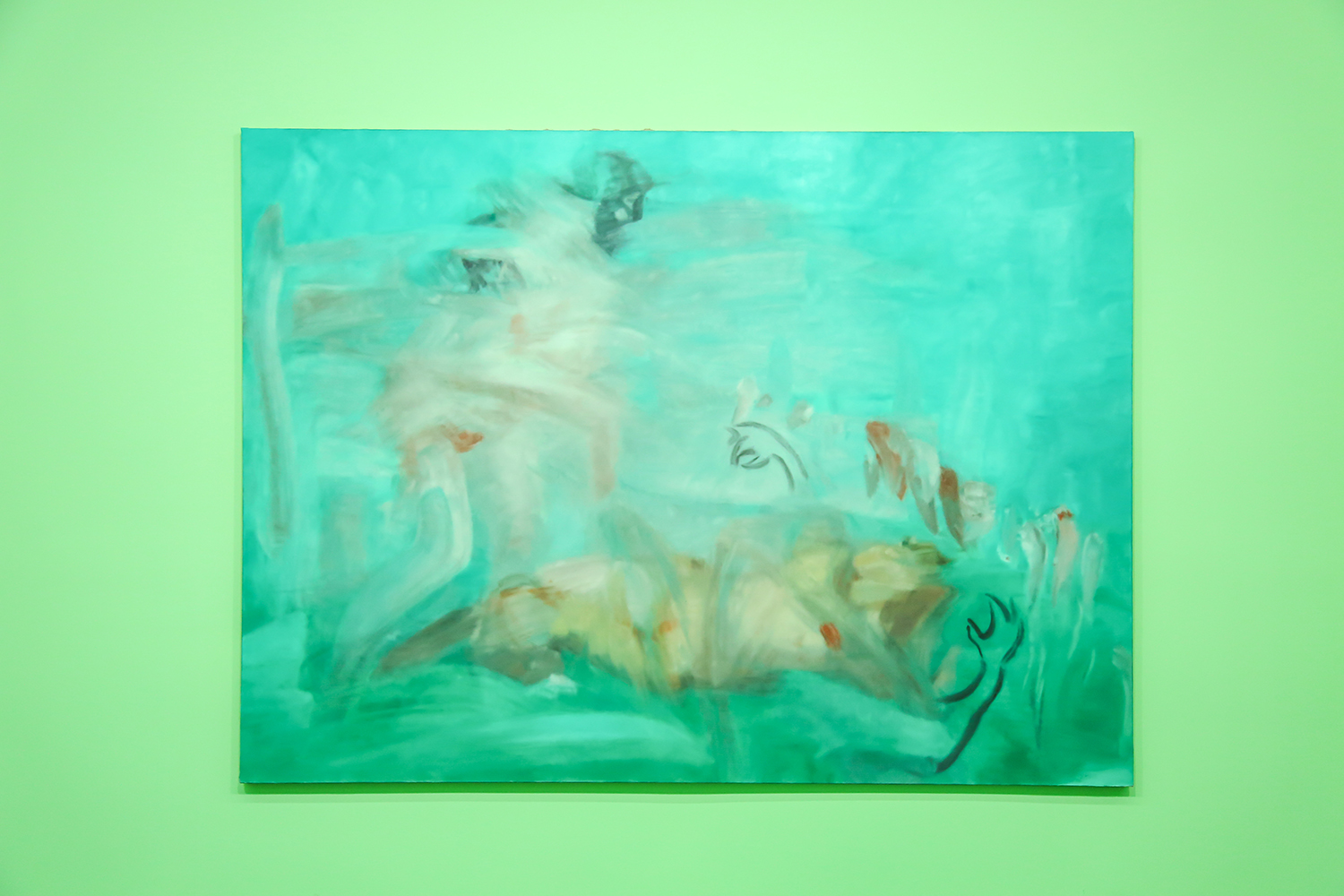Shows
Xie Nanxing’s “Spices”


On one of his now legendary ocean voyages in search of foreign and uncharted lands, Christopher Columbus once mistook a kind of Caribbean tree bark for a new spice. Centuries later, this anecdote inspired the title of Xie Nanxing’s solo show at Beijing’s Ullens Center for Contemporary Art. Xie is an explorer of a different sort—his “Spice” (2016–17) series, comprising seven oil paintings, marks a new chapter in his journey through Western art history, a course-correction in which he interrogates his own prior understanding of the subject, and the relationship between Western and Chinese artistic styles.

In Spice No. 1 (2016), Xie depicts a scene of violence and aggression. A female figure lies on the ground, torso twisting in agony, while her hands are raised in self-defense. A male aggressor lunges towards her, his three legs suggesting a swift onslaught towards his victim. This painting conjures up images of classical 16th century works such as the rape of Lucretia or Europa, rendered by the likes of Titian and Hans von Aachen. However, Xie only uses a dearth of loose brushstrokes; for the victim’s hands and arms, he simply employs a rough, black line. A limited color palette of peaches and pinks stand in stark contrast to the strong teal green of the background. This atmosphere of ferocity is further amplified by the color of the walls, which are of the same green hue and which were specifically requested by the artist for the exhibition.
Despite the art historical reference in the work’s subject matter, Xie inserts contemporary elements, producing a clash of time periods to disturbing effect. In Spice No. 4 (2017), three figures appear to be seated on the grass, with one playing on a medieval string instrument—a composition that recalls paintings of relaxed, outdoor social gatherings such as Pastoral Concert (c. 1508–10), attributed to Titian or Giorgione, and Edouard Manet’s Le déjeuner sur l’herbe (1863). Yet, in Xie's work, this tranquil atmosphere is disrupted by the roosters in the foreground, which seem poised to fight. Furthermore, a visually jarring string of smudged bright yellow numbers presented like the display of a digital clock forcefully pulls our attention away from the idyllic romanticized past represented by the seated figures, jolting us into the present age.

In Spice No. 7 (2017), figures are seated around a table in an arrangement reminiscent of Leonardo da Vinci’s mural The Last Supper (1494–98) or Caravaggio’s painting Supper at Emmaus (1601), though the artist has stated that he drew it without reference to any particular painting. Xie executed the background predominantly in shades of blue, whereas the figures are coarsely painted in whites and flesh-tones. Despite the use of loose brushstrokes, we can read something into the characters; one seems to be looking at the main protagonist in surprise, while another is engaged in a debate with him. Crudely painted, graffiti-like black arrows point to individuals within the composition, resembling notes from in-progress analyses, or as if the artist is trying to tell the viewer something about those highlighted figures, although what that is remains unclear.
In Spice No. 3 (2016), a painting dominated by pinks and reds, a procession of women promenades down a curved set of stairs, the rounded lines of their bodies carrying the suggestion of swaying hips. Marcel Duchamp’s Nude Descending a Staircase, No. 2 (1912)—which was in turn inspired by Eadweard Muybridge’s chronophotographic motion studies, such as Woman Walking Downstairs (1887)—comes to mind. In one of the sketches for Spice No. 3, also on view at the exhibition, the women hold Chinese style fans, in another, parrots—both of which are commonly used motifs that allude to exoticism. In the final piece, it is two parrots that are perched on the hands of two women, with the bird in the foreground painted in a way that tricks the viewer into thinking it is a sketch made on a scrap of paper that has been pasted onto the work’s surface, when it is in fact directly marked on the canvas. This incongruity in Xie's amalgamated images refers to the tensions between Western art—an external influence from an Asian standpoint—and contemporary Chinese art, highlighting the stylistic clashes between the two.
Xie’s reinterpretations of canonical Western paintings were jarring in their subversions of the familiar. It is through this staged sabotage, however, that the artist puts these images squarely in the here and now.

Xie Nanxing’s “Spices” is on view at the Ullens Center for Contemporary Art, Beijing, until May 27, 2018.







